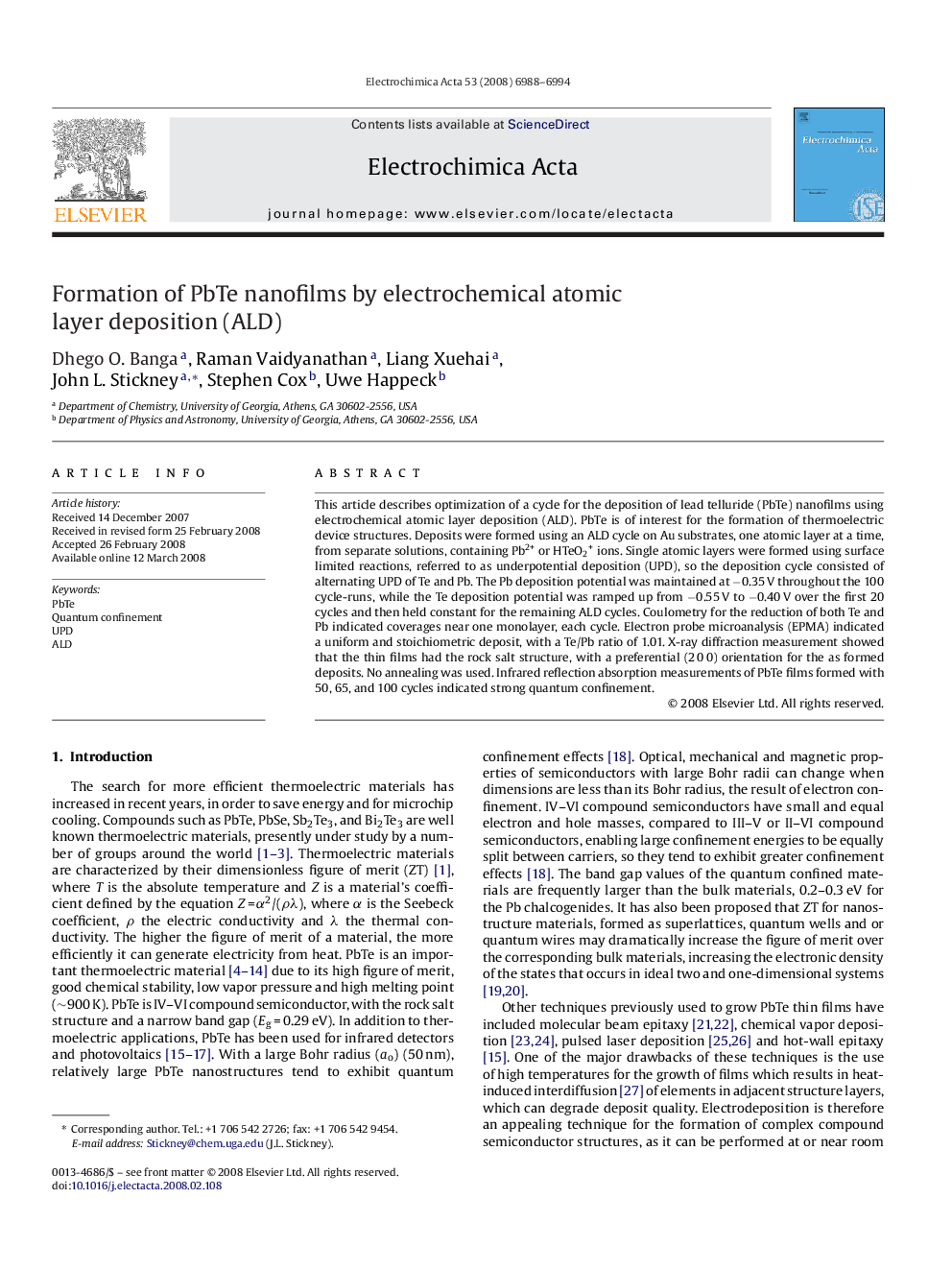| Article ID | Journal | Published Year | Pages | File Type |
|---|---|---|---|---|
| 194738 | Electrochimica Acta | 2008 | 7 Pages |
This article describes optimization of a cycle for the deposition of lead telluride (PbTe) nanofilms using electrochemical atomic layer deposition (ALD). PbTe is of interest for the formation of thermoelectric device structures. Deposits were formed using an ALD cycle on Au substrates, one atomic layer at a time, from separate solutions, containing Pb2+ or HTeO2+ ions. Single atomic layers were formed using surface limited reactions, referred to as underpotential deposition (UPD), so the deposition cycle consisted of alternating UPD of Te and Pb. The Pb deposition potential was maintained at −0.35 V throughout the 100 cycle-runs, while the Te deposition potential was ramped up from −0.55 V to −0.40 V over the first 20 cycles and then held constant for the remaining ALD cycles. Coulometry for the reduction of both Te and Pb indicated coverages near one monolayer, each cycle. Electron probe microanalysis (EPMA) indicated a uniform and stoichiometric deposit, with a Te/Pb ratio of 1.01. X-ray diffraction measurement showed that the thin films had the rock salt structure, with a preferential (2 0 0) orientation for the as formed deposits. No annealing was used. Infrared reflection absorption measurements of PbTe films formed with 50, 65, and 100 cycles indicated strong quantum confinement.
